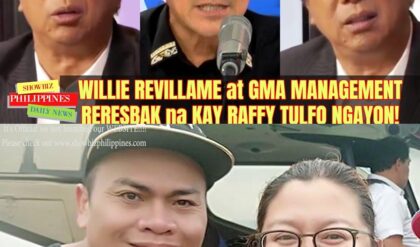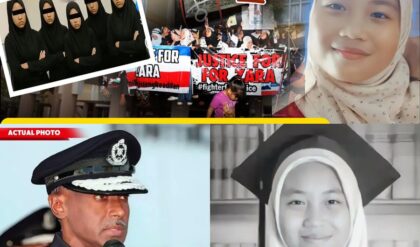Drama Erupts: The Zaldico Testimony, The ₱100-Billion Shadow, and The Brown Leather Bag

The halls of power, usually shrouded in bureaucratic decorum, have been violently ripped open, exposing a malignant core of alleged corruption so vast it defies belief. Former Congressman Zaldico, a man once part of the establishment’s inner circle, has emerged from the shadows not as a politician, but as a fear-tinged whistleblower, delivering a testimony that has detonated a political earthquake. His claims center on an alleged “₱100-billion insertion”—a figure so astronomical it reads less like a budgetary line item and more like a declaration of war against the nation’s integrity. The accusation points directly at the highest levels of government, creating a crisis of trust that asks the most fundamental question: What are the people in charge truly hiding behind the walls of power?
This is not a simple case of misplaced funds or standard political maneuvering. This is a terrifying, intricate web of deceit involving mysterious meetings, coded instructions, and the now-infamous artifact that is at the heart of the scandal: a mundane, innocuous brown leather bag, which Zaldico claims holds the explosive secrets that could bring down entire administrations.
The Anatomy of the Insertion: Coded Transactions and Shadow Figures
Zaldico’s account paints a cinematic picture of high-stakes corruption. He describes a system where the ₱100-billion figure was not a direct transfer, but a series of calculated “insertions” into various infrastructure projects and emergency allocations, designed to be untraceable and non-sequential. He speaks of clandestine meetings held not in government offices, but in darkened hotels and private residences, where the air was thick with smoke and unspoken threats.
The instructions, Zaldico alleges, were delivered through a system of highly specific, non-political jargon. The “insertion” was referred to only by coded phrases: “Project Chimera,” “The Harvest Season,” or “Phase Delta.” This layer of cryptography was designed to provide plausible deniability, ensuring that even if wires were tapped or documents were seized, the conversations would appear to be about benign business transactions. Who devised this system? Zaldico names names, but his fear is palpable, suggesting that the orchestrators of this ₱100-billion operation possess power that extends far beyond political boundaries—reaching into the nation’s security and enforcement arms.
The question of how such a massive sum could be moved remains largely unanswered, but Zaldico’s testimony provides a horrifying glimpse: paper trails meticulously destroyed, bank accounts opened and closed in rapid succession across multiple jurisdictions, and the use of shell companies acting as financial decoys. This wasn’t a blunder; it was a masterpiece of financial malfeasance.
The Mystery of the Brown Leather Bag

At the center of Zaldico’s shocking narrative is a physical object that has become the focus of national obsession: the brown leather bag. Zaldico claims this bag was the exchange point, the tangible link between the top officials and the flow of illicit funds. But its contents, he insists, are far more valuable than cash.
He alleges the bag contains not only copies of the coded instructions but also a series of small, encrypted storage devices holding audio recordings of the key meetings, signed ledgers detailing the beneficiaries, and, most chillingly, a contingency plan for the escape and protection of the top officials involved. This bag is the Sword of Damocles hanging over the establishment—a weapon of mutually assured destruction.
The mystery deepens: Where is the bag now? Zaldico has given conflicting locations—a guarded safety deposit box in a neighboring country, a clandestine burial spot, and even a cryptic reference to a “silent watcher” holding it for safekeeping. Was this strategic misdirection to protect the evidence, or a sign that Zaldico himself no longer controls the fate of the nation-shaking secrets? The fate of the bag is the fate of the investigation.
The Timelines Clash and Motives Blur
The moment Zaldico made his claims, the official counter-narrative was deployed: a swift, brutal campaign to discredit him, citing “political vendetta” and “mental instability.” But the timeline itself betrays the official version.
Zaldico, according to his former aides, had been compiling evidence for years, meticulously documenting the corruption he was forced to participate in. His alleged sudden, public break was, in fact, a carefully staged escape. However, the opposition has pointed out a crucial, three-month gap in Zaldico’s public records, a period where his whereabouts were unknown. Was this the time he spent documenting the conspiracy, or was it the period during which he secured his own lucrative exit strategy?
The blur of motives is a dangerous game: Is Zaldico a patriot risking his life to expose the truth, or a disgruntled insider leveraging secrets for immunity or profit? The truth likely lies in a complex, gray area, but the public needs clarity. The clash of timelines—the official record against the whistleblower’s slow-burn compilation—highlights the immense pressure being exerted to control the narrative, drowning the facts in a sea of political spin.
The Ominous Silence and Alleged Threats
Perhaps the most terrifying aspect of Zaldico’s testimony is the pervasive fear. He claims he and multiple key witnesses were allegedly told to stay silent, with the unspoken threat of violence hanging over their families. This transcends politics; it suggests a far more dangerous element—an organized, ruthless criminal enterprise operating under the guise of legitimate government.
The silence from other potential witnesses is deafening. Journalists are reporting unusual surveillance, lawyers are retracting their names from the case, and former colleagues of Zaldico are suddenly retiring or taking extended leave. This collective withdrawal suggests that the danger is not perceived; it is real and immediate.
Was this just political maneuvering? Absolutely not. Political maneuvering ends with a demotion or a defeat at the polls. This operation involves alleged coercion and threats that point to a system willing to erase people to protect the money. The unanswered questions only grow darker by the minute: Who is truly untouchable in this conspiracy? And what price will the nation pay to discover the rest of the secrets held within that brown leather bag? Zaldico’s testimony is a terrifying crack in the wall, revealing that what they are hiding is not just money, but the terrifying realization that the highest offices may be fundamentally compromised. The truth is still buried, and the consequences of unearthing it promise to change everything.





